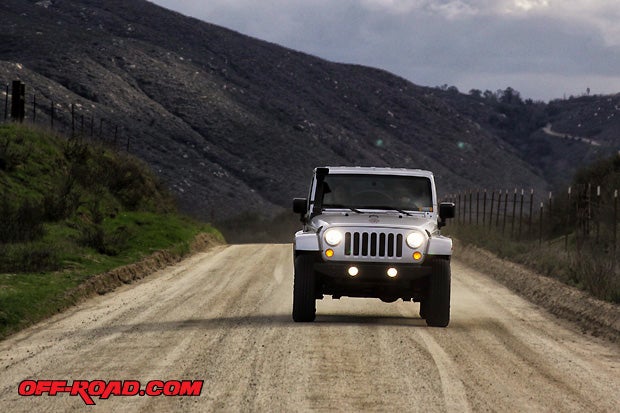
If you like to drive on dusty trails with your Jeep, chances are the air filter gets dirty quickly and often. Maybe your Jeep spends more time in the mud, or going in and out of creeks and rivers. In any of these cases, your Jeep may benefit from an air intake snorkel system.
The factory air intake box, and most aftermarket cold air intakes, sit inside the engine compartment level with the bottom of the fender wheel well line. The air inlet is found on the right-side (passenger) fender. This can be rather low, especially if you have a stock height or small lift on your Jeep. Raising the air intake from the fender wheel well area up to a higher point on the vehicle can drastically improve the safety of water fording and provide more cool and clean air.
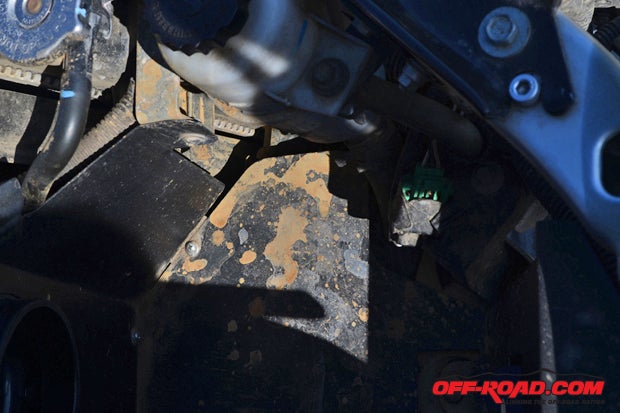
There are a number of snorkel companies out there to choose from, but a common turn-off to all of them is the cutting and modification that goes along with them. From making large holes on the side of the fender to replacing hoods or cutting them up, you really have to be committed to the cause before you start.
Rugged Ridge Off-Road has recently released a new snorkel system designed for 2007-2011 Jeep Wrangler Unlimited JK that minimizes sheet metal cutting yet offers a true snorkel system that delivers a dry, clean and cold supply of air from outside the engine compartment. Itís the first snorkel designed with the modular functionality of a pre-filter low mount and Ram High Mount air intake design. The new Modular XHD Snorkel System from Rugged Ridge relocates the stock air intake location to help reduce dust clogged filters and the risk of hydro-locking your engine. By using the optional Ram High Mount, the air intake is extended up an additional 21 inches to the top of the windshield.
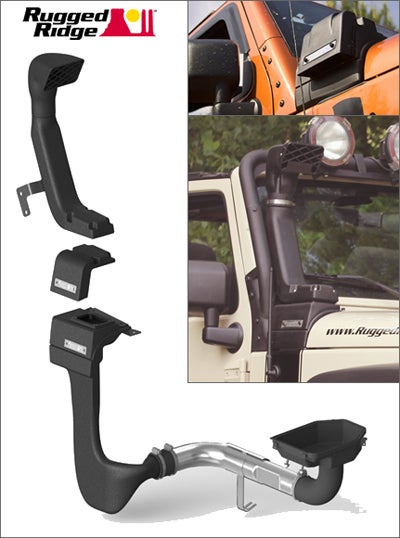
We were able to get our hands on one of these new snorkel systems and were eager to see firsthand how this new design from Rugged Ridge would compliment the functionality and style of the Jeep JK without being a total hack job.
INSTALLATION
The installation of the Rugged Ridge Modular XHD Snorkel System requires disassembly of the right fender, door, windshield bracket and cowl cover. Youíll also have to remove part of the factory air intake system. If you have the time and are patient, you can do it in your very own garage. Rugged Ridge provides a very detailed set of instructions that include over 100 images of steps to help you complete the job. They also have a technical support line if you should get stuck.
There is some drilling and cutting but itís minimal. The beauty of it is that it can be set back to stock if you should ever need to remove the snorkel. This is not the case with other brands.
Here is a list of the tools and supplies you will need when installing the Rugged Ridge Modular XHD Snorkel System:
Drill with 1/8Ē, 5/16Ē and 7/32Ē drill bits
Angle grinder or Dremmel tool / with metal cutoff wheel
High quality sealant (RTV)
(T-40) & (T-30) Torx bit screw driver or socket
Quality black satin spray paint & painters masking tape
Allen wrench set
Sand paper or sanding block
1Ē - 2Ē Putty knife
Body color touch up paint
Super glue
Below is an overview of the Rugged Ridge Modular XHD Snorkel System installation.
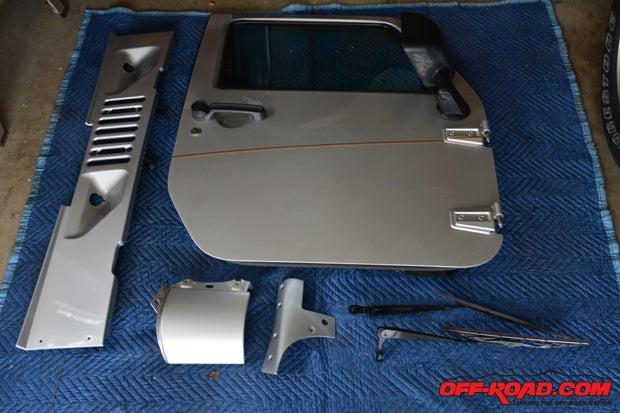
Some prep work is needed before installing the snorkel system. We had to strip down the passenger side from its sheet metal to be able and access the frame rail and inner fender area. We started by removing the passenger door. The rock rails also needed to be removed. Models like the Rubicon or those running a similar rock rail design that bolts onto the body will need the same. Once that was done, we moved on to removing the windshield bracket, wipers, center cowl cover, and right side cowl cover (passenger). It does help to have a second set of hands when removing body parts like the door and fender to minimize the chance of scratching or denting them.
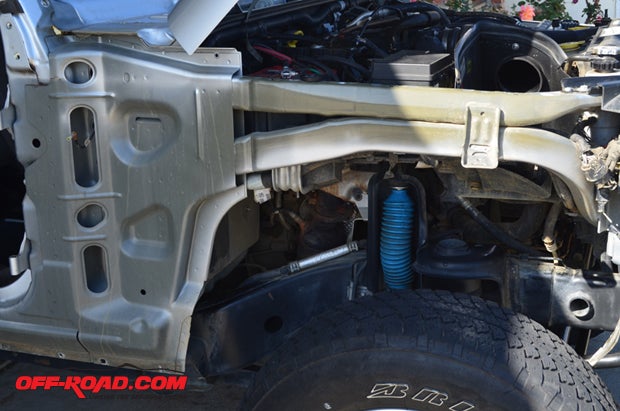
We finished up the body stripping by removing the right fender and inner fender off the Jeep. All the parts came off with minimal effort. All the bolts were kept in a plastic container for later use.
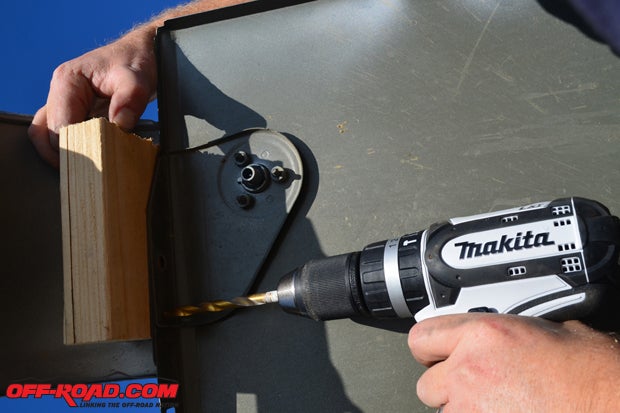
Once the right fender was off the Jeep, we needed to drill out some spot welds holding the attached upper cowl section to the fender. A 1/8-inch drill bit is used to create some pilot holes, followed by re-drilling them with a larger 5/16 inch bit. To avoid drilling through the upper cowl, a wood block should be used, as shown above.
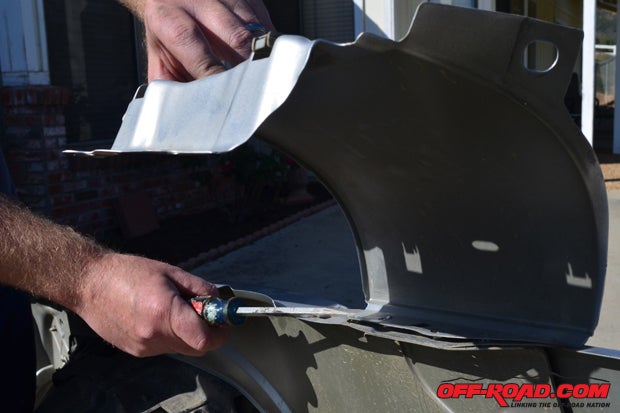
Once the spot welds have been drilled out, the upper cowl should separate from the fender with minimal effort.
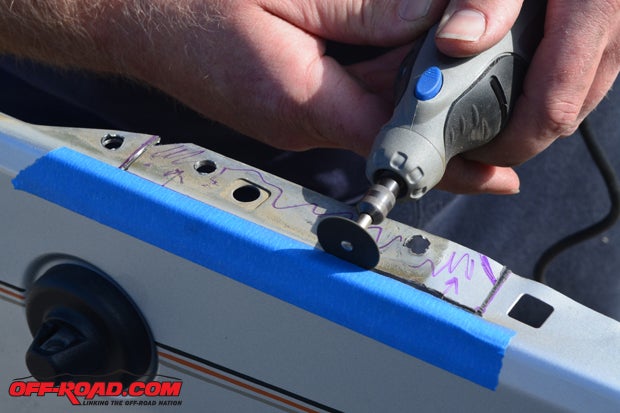
There is a little cutting involved on the top fender lip by the antenna mount. Rugged Ridge includes a template to help mark the area that will allow the main snorkel body to come through to the outside of the Jeep. Our template was not to scale, so we had to improvise by making some careful measurements and test fitting the fender where the snorkel ducting would be running. We used painterís tape at the edge of the fender to prevent paint chipping. Remember... measure twice, cut once.
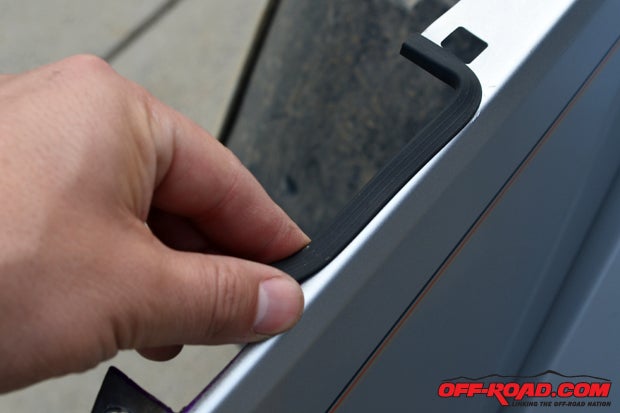
Once the piece was cut out from the fender lip, a rubber trim provided by Rugged Ridge is glued on to give it a nice finish. We also filed down any sharp edges.
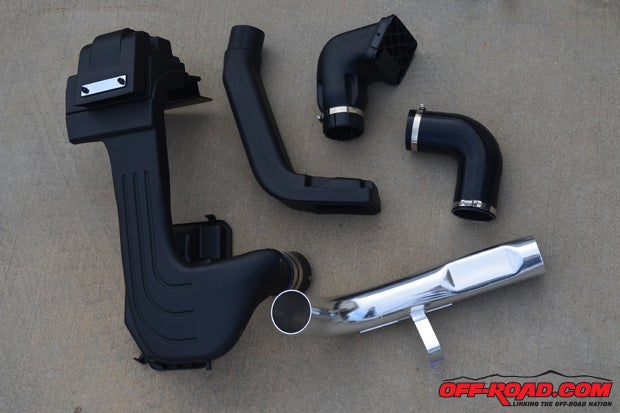
Photographed are all the hard parts and silicone fittings included with the Rugged Ridge Modular XHD Snorkel System.
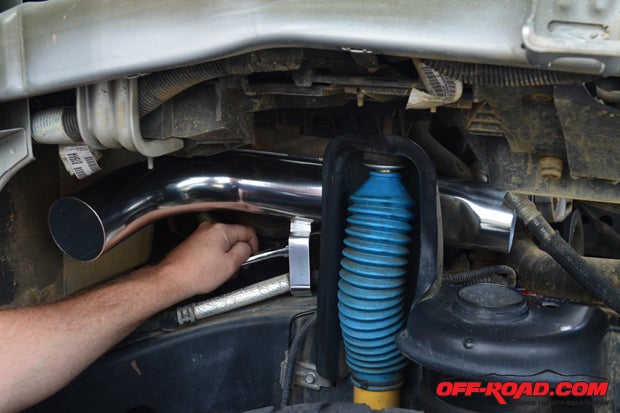
The steel mandrel bent tube runs below the air box along the frame rail. It bolts onto the frame using an existing bolt. This piece connects the main plastic snorkel body and the air filter box inside the engine compartment.
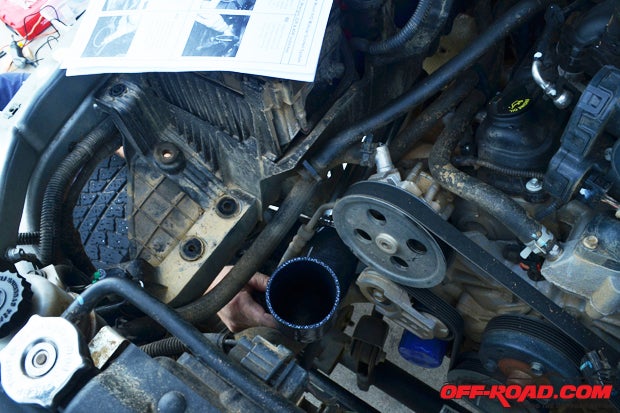
Silicone fittings are used to connect the lower air box replacement piece, provided by Rugged Ridge, with the steel pipe. Minimal trimming of the silicone elbow was required to set the lower box flat. The top portion of the factory air box is reused. If you happened to get rid of your factory air box you'll have to source one. Try eBay, Jeep forums or your local Jeep club.
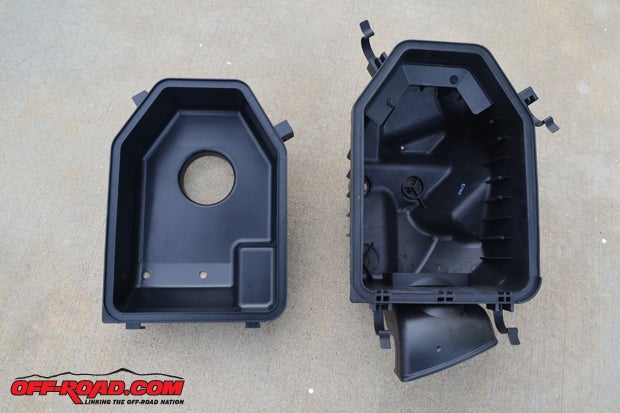
The lower air box that encloses the air filter is replaced with a new one from Rugged Ridge (left). The factory lower air box is shown right. The snap clips from the factory box are transferred over to the Rugged Ridge lower.
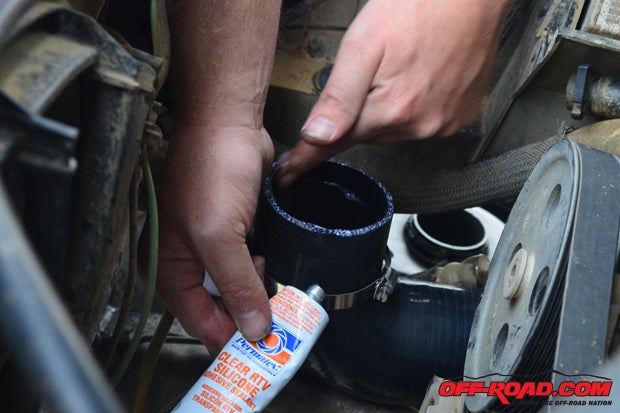
Once everything was test fitted, we disassembled the ducting and added silicone sealant to waterproof the pipe fitting connections. This is an important part of the installation, as attention to detail will ensure a watertight fit. All the hoses were tightened with clamps provided by Rugged Ridge.
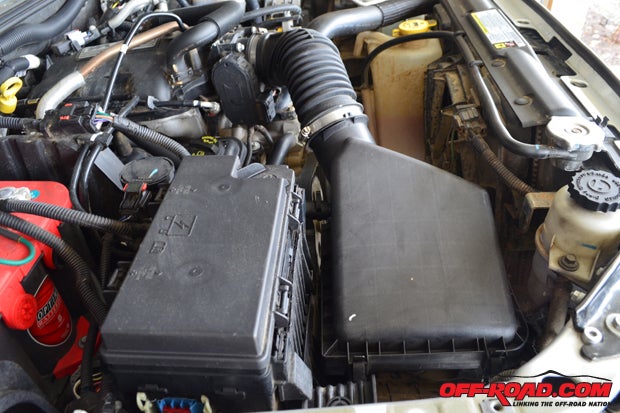
Some additional waterproofing is needed at the bottom of the air box bolt holes. We used some more silicone (RTV also works) to finish the job. The air filter is put in place, followed by the factory upper air box lid. Everything fit nicely. The manufacturer recommends using a high flow filter like the washable Rugged Ridge or K&N Filter to maximize performance.
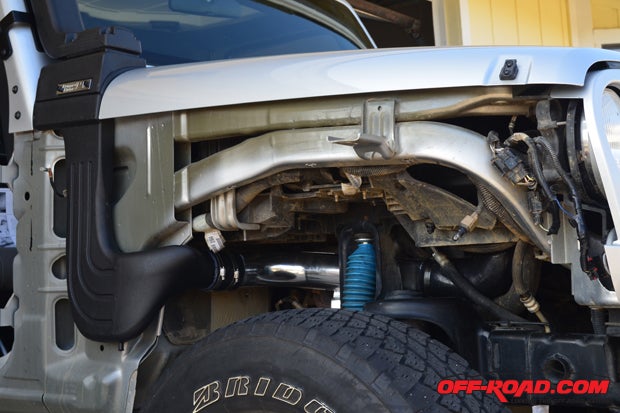
The snorkel main body should sit tight against the inner frame. Using a Z-bracket, the final adjustments are made to the main plastic body at the cowl. Once everything is aligned and fastened, the center cowl cover and wipers go back on the Jeep, starting the body reassembly process.
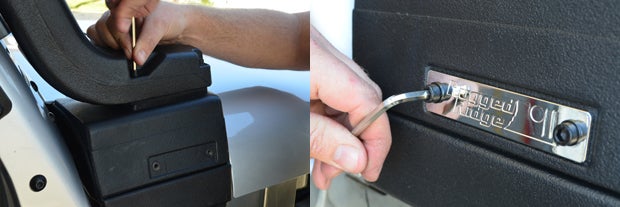
Rugged Ridge includes some nice Allen and hex bolts for the nameplate and Low and High Ram snorkel attachments.
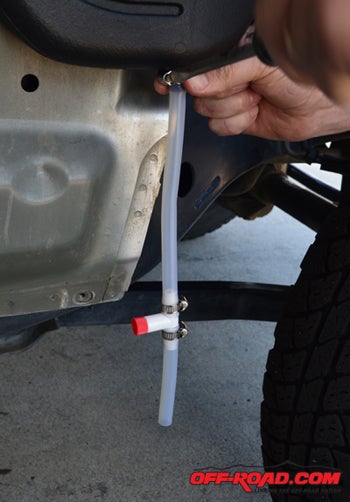
The Rugged Ridge XHD Modular Snorkel System includes a drain hose with valve for draining the lowest point of the main body. This is designed for servicing the snorkel after water fording, or once a year.
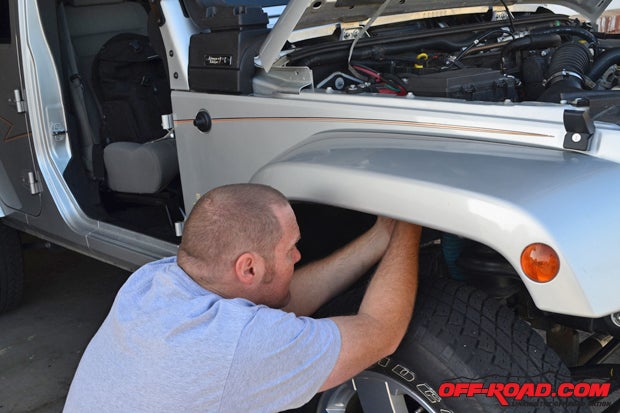
The right fender goes back on the Jeep, followed by the passenger door and rock rail. Having a second pair of hands to carefully align each part and prevent a dent or scratch is highly recommended.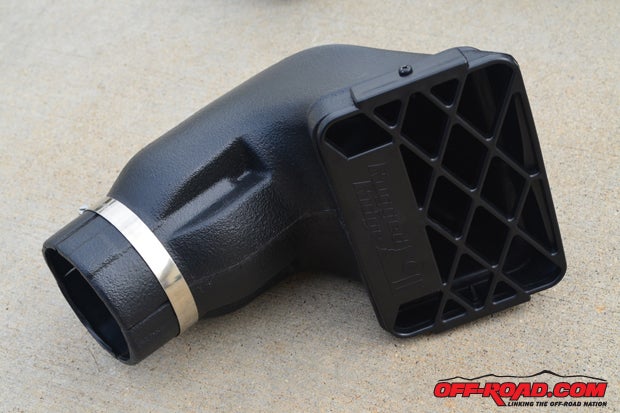
Depending on what model Rugged Ridge snorkel system you have, you can either run the Low-Mount Pre Filter or High-Mount Ram. The high-mount uses an additional bracket that ties into the window frame for added support. The top ram scoop is held in place by a clamp and can be positioned in any direction.
The entire job takes 5-6 hours.
FINAL THOUGHTS
We are very impressed with the Rugged Ridge XHD Modular Snorkel System for the Jeep Wrangler JK. The product is well made, requires minimal permanent modification to the sheet metal on the Jeep, yet it is able to effectively deliver a true snorkel air intake system that is water tight and functional. The sealed ducting design from Rugged Ridge does in fact allow fording water or romping in the mud with confidence--preventing possible hydro-locking.
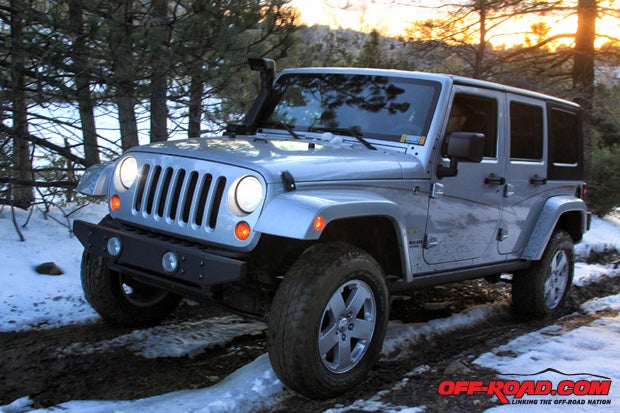
Thereís also the benefit of getting cool and clean air from outside the engine compartment of the Jeep by using this system. Moving the air intake point from the wheel well line up to the top of the fender (using Low Mount) or the roof line (using Ram High Mount). The higher intake point can make a difference between clogging your filteróstarving your engine from air and power. Living in the southwest and frequently visiting the desert regions makes this new feature very handy. The snorkel grabs air from a much higher point on the vehicle.
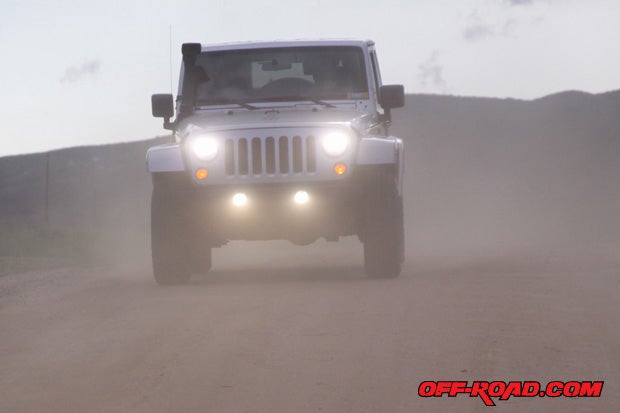
We are a big fan of function, and the Rugged Ridge XHD Modular Snorkel System delivers on that promise. In addition, we really like the fact that this systems allows the owner to remove the snorkel and return to stock if they ever needed to. Rugged Ridge includes a piece of sheet metal to fill the area cut on the fender lip. Itís not the case with other snorkels on the market. This alone makes the Rugged Ridge Modular XHD Snorkel System a great choice for any Jeep owner looking to upgrade their intake system.
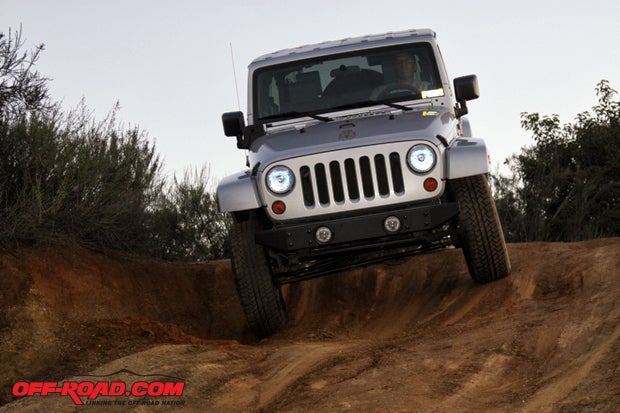
We ran both the Low Mount Pre-Filter and High Mount Ram snorkel attachment to see if we noticed any significant changes. As far a performance, Rugged Ridge states that their is no horsepower gain. Our seat-of-the-pants meter would agree. The purpose of the snorkel is to provide your Jeep with clean air and peace of mind to avoid hydro-locking when crossing water; itís not for increasing horsepower. Running a high-flow filer will help some. Brian, owner of the Jeep did, however, notice a little more torque at low RPMs when climbing hills. On the highway, the Low Mount Pre-Filter is much more user friendly. The High Mount Ram does give off some wind noise at highway speed, as expected with any tall snorkel. Itís nothing obnoxious, but it is noticeable.
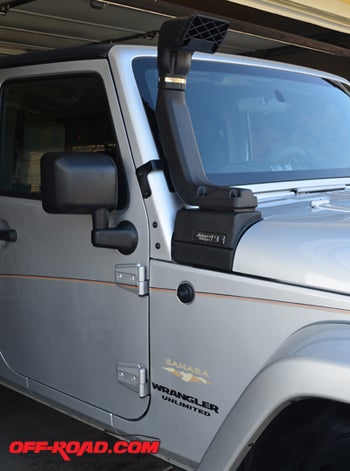
Overall, we are very pleased with the design and fitment of the Rugged Ridge Modular XHD Snorkel System. If you like to mix your Jeep with the elements and want to help increase the longevity of your engine, we highly recommend you consider the Rugged Ridge XHD Modular Snorkel System. Itís much cheaper than replacing an engine, plus it gets a lot of looks and people wanting to learn about your Jeep both on and off the trail.
SOURCE
Rugged Ridge
(770) 614-6101
http://www.ruggedridge.com/


 Your Privacy Choices
Your Privacy Choices